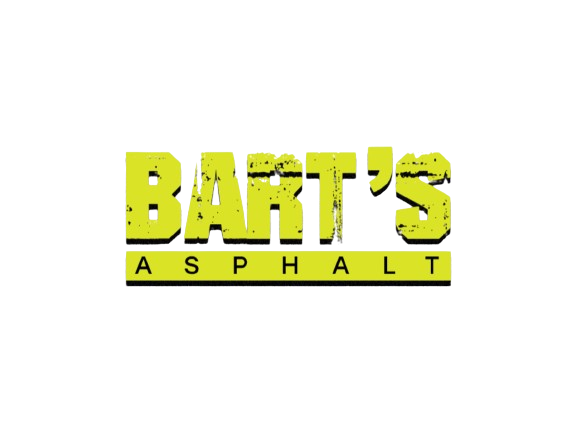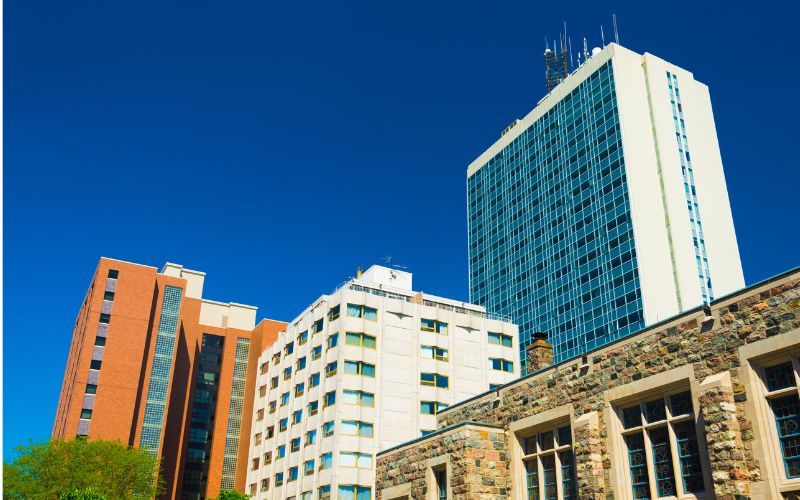Ann Arbor’s technological landscape represents a sophisticated ecosystem of innovation, where infrastructure plays a critical role in supporting groundbreaking research and technological advancement. The asphalt surfaces within these innovation corridors are far more than simple roadways – they are precision-engineered infrastructure that supports the movement of cutting-edge research, specialized equipment, and the brilliant minds driving technological progress.
From the University of Michigan’s research facilities to the city’s emerging technology parks, these surfaces must meet extraordinary standards of performance, safety, and reliability. Every inch of asphalt tells a story of technological potential, supporting the intricate dance of scientific discovery and technological innovation that defines Ann Arbor’s unique intellectual landscape.
Understanding Technology Park Asphalt Challenges
Technology and research park surfaces present a unique set of infrastructure challenges that distinguish them from standard commercial or industrial environments. These specialized areas experience distinctive traffic patterns characterized by precise, carefully managed movement of research equipment, specialized vehicles, and highly sensitive scientific machinery. The surfaces must accommodate everything from delicate research vehicles to emergency response equipment, creating a complex infrastructure ecosystem.
The environmental demands placed on these surfaces are extraordinarily nuanced. Research facilities require surfaces that can withstand precise loads, maintain exceptional surface integrity, and provide minimal vibration and disturbance. Michigan’s dramatic seasonal variations create additional complexity, with freeze-thaw cycles and temperature fluctuations introducing potential challenges to surface performance.
Different technological environments experience unique infrastructure requirements that impact surface design and maintenance. A cutting-edge robotics research facility will have dramatically different surface needs compared to a biotechnology research center. The precision required in these environments demands a level of infrastructure management that goes far beyond standard commercial maintenance approaches.
Diagnostic Approaches for Technology Park Surfaces
Modern diagnostic techniques have revolutionized approaches to technology park asphalt maintenance. Advanced technologies like ground-penetrating radar, high-precision laser scanning, and sophisticated infrared analysis provide unprecedented insights into surface conditions. These methods can detect microscopic variations, potential structural weaknesses, and subtle surface changes that would remain completely invisible through traditional inspection methods.
Professional assessment for technology park surfaces represents a sophisticated scientific process. Maintenance experts conduct comprehensive evaluations that examine surface integrity with scientific precision, considering factors that extend far beyond standard infrastructure maintenance. The diagnostic process considers complex variables including load-bearing capacity, surface evenness at microscopic levels, potential vibration transmission, and specific environmental interactions.
These advanced diagnostic approaches recognize the critical nature of technological infrastructure. Every surface imperfection represents a potential disruption to sensitive research processes, making comprehensive evaluation a crucial component of maintaining cutting-edge research environments.
Economic Considerations for Research Facility Managers
The financial implications of infrastructure maintenance represent a critical consideration for technological research facilities. Comparative cost analyses reveal compelling economic insights that demonstrate the profound benefits of proactive maintenance strategies. Reactive repair approaches can cost between $20-$50 per square foot, while proactive maintenance strategies typically range from $5-$10 per square foot.
These figures represent more than simple numerical comparisons. They tell a story of strategic infrastructure management where intelligent investment can potentially save research facilities significant resources. Proactive maintenance transforms surfaces from potential operational liabilities into strategic assets that support technological innovation.
The economic benefits extend far beyond direct repair costs. Well-maintained surfaces contribute to improved research efficiency, reduce potential equipment damage risks, and demonstrate a commitment to precision infrastructure management. For Ann Arbor’s competitive research landscape, this can directly impact research capabilities, facility attractiveness, and overall technological innovation potential.
Safety and Operational Efficiency Considerations
Safety and precision represent the most critical considerations for technology park surfaces. These infrastructure elements must provide exceptional performance that supports sensitive research equipment, ensures precise movement, and maintains the highest standards of operational safety. Surfaces must meet extraordinarily rigorous standards that go far beyond typical commercial infrastructure requirements.
Research facility surfaces must accommodate a diverse range of specialized vehicles and equipment, from delicate robotic systems to emergency response vehicles. This demands an approach to surface design and maintenance that considers multiple complex factors simultaneously. The surfaces must provide exceptional load-bearing capabilities, minimal vibration, and consistent performance under varying environmental conditions.
The design of technological infrastructure surfaces must consider the unique movement patterns of research environments. From precise robotic vehicle paths to emergency access routes, every aspect of surface design plays a crucial role in supporting cutting-edge technological research and innovation.
Specialized Repair and Maintenance Techniques
Technology and research park surface maintenance requires a level of sophistication that far exceeds standard commercial surface treatments. Repair approaches must address the unique challenges of high-precision technological environments, considering the critical role these surfaces play in supporting sensitive research and innovative infrastructure. Professional repair techniques involve comprehensive surface preparation, specialized material selection, and advanced application methods that ensure exceptional performance and minimal disruption.
Pothole repair and surface restoration for technology park areas demand extraordinary precision. These techniques involve more than simply filling surface cavities – they require comprehensive structural assessment, specialized material selection, and precise application methods that restore full functionality while maintaining the microscopic surface evenness critical for sensitive research equipment. Areas near research facilities, precision instrument pathways, and specialized vehicle routes require particularly sophisticated approaches that can withstand intense, precise usage.
High-stress areas require targeted maintenance strategies that recognize the unique wear patterns of technological research environments. Entrance and exit points, primary research corridors, and areas supporting specialized equipment experience concentrated stress that demands sophisticated, proactive maintenance approaches. Facility managers must develop comprehensive strategies that address these specific challenges while maintaining the exceptional surface performance required for cutting-edge research.
Traffic Flow and Operational Infrastructure
Effective traffic flow management represents a critical consideration for technological infrastructure surfaces. Surface design and maintenance must create comprehensive solutions that optimize movement, ensure safety, and support the complex operational needs of research and technology facilities. The surfaces become a sophisticated system that must accommodate multiple specialized user types with varying precision requirements and operational expectations.
Strategic infrastructure design involves a holistic approach to space utilization and technological movement. Research facility managers must carefully consider how surfaces can facilitate precise movement for specialized research vehicles, delicate equipment, emergency services, and various technological applications. This requires a comprehensive understanding of traffic patterns, specialized usage requirements, and the diverse needs of different technological research environments.
Advanced marking techniques and intelligent design can significantly improve infrastructure functionality. By implementing strategic line striping, creating clear precision pathways, and developing design solutions that maximize available space, technology parks can transform their surfaces from simple transportation areas into sophisticated, research-focused infrastructure elements that support technological innovation.
Seasonal Maintenance Planning
Seasonal maintenance for technology park surfaces in Ann Arbor requires a comprehensive approach that anticipates the unique challenges of Michigan’s extreme climate. The dramatic temperature variations and intense weather conditions demand a sophisticated strategy that goes far beyond standard surface treatment, recognizing the critical nature of maintaining continuous, precise access for sensitive research operations.
Winter preparation emerges as a critical maintenance window. Facility managers must develop comprehensive approaches that protect surfaces from the destructive freeze-thaw cycles characteristic of Michigan winters. Late fall provides an optimal period for implementing protective treatments, crack sealing, and comprehensive surface preparations that can shield the asphalt from potential winter damage while ensuring continued accessibility for critical research infrastructure.
Summer offers an ideal opportunity for more extensive repair and renovation projects. The extended daylight hours and stable temperatures create perfect conditions for comprehensive asphalt work. During these months, research facility managers can undertake significant maintenance projects with minimal disruption to technological operations, addressing issues accumulated during the winter months and preparing surfaces for continued innovative research.
Technology and Innovation in Asphalt Management
Technological innovations are fundamentally transforming approaches to research park surface maintenance. Advanced diagnostic technologies now provide unprecedented insights that enable predictive, data-driven maintenance strategies. Ground-penetrating radar, high-precision laser scanning, and sophisticated monitoring systems allow for early detection of potential infrastructure issues before they become critical problems that could impact sensitive research operations.
Smart monitoring systems represent a revolutionary approach to infrastructure management. These advanced technologies can continuously assess surface conditions, predict potential maintenance needs, optimize repair scheduling, and provide comprehensive data that allows for more strategic decision-making. By leveraging real-time analytics and sophisticated sensor technologies, research facility managers can transform reactive maintenance approaches into proactive, predictive infrastructure management strategies.
Emerging technologies are pushing the boundaries of what’s possible in research park surface maintenance. Innovations in material science, predictive analytics, and monitoring technologies are creating new possibilities for infrastructure management. These advancements promise to provide even more sophisticated approaches to protecting and maintaining critical surfaces that support groundbreaking technological research.
Compliance and Regulatory Considerations
Compliance and safety represent critical considerations for technology park surface maintenance. Multiple layers of regulations, including specialized research facility standards, safety guidelines, and environmental compliance requirements, create a complex framework that demands precise attention to detail. These requirements go far beyond simple surface maintenance, representing a comprehensive approach to supporting cutting-edge research infrastructure.
Research facility safety standards create a sophisticated set of requirements that touch every aspect of surface design and maintenance. Surfaces must meet stringent criteria for precision, accessibility, specialized vehicle access, and overall research environment functionality. This requires a holistic approach that considers multiple regulatory frameworks simultaneously, ensuring that every aspect of the infrastructure supports optimal technological research operations.
Emergency access and comprehensive safety considerations become paramount in technological research environments. Surfaces must provide clear, unobstructed pathways for emergency vehicles and specialized equipment while maintaining the exceptional precision required for sensitive research applications. This requires sophisticated infrastructure solutions that balance multiple competing priorities, ensuring the safety and operational effectiveness of critical research facilities.
Environmental and Sustainability Factors
Environmental sustainability has become a critical consideration in modern technological infrastructure maintenance. For Ann Arbor’s research parks, this approach goes far beyond simple environmental responsibility, representing a sophisticated strategy for long-term infrastructure management and resource conservation that supports innovative research.
Advanced sustainable maintenance technologies offer a comprehensive approach to infrastructure preservation. These innovative solutions focus on developing maintenance strategies that minimize environmental impact while maximizing surface performance. Eco-friendly approaches incorporate recycled materials, reduce carbon footprint, and develop more sustainable application techniques that protect both the immediate infrastructure and the broader environmental ecosystem.
The long-term benefits of sustainable infrastructure maintenance extend far beyond immediate environmental considerations. By implementing green infrastructure strategies, research facilities can potentially reduce long-term maintenance costs, improve overall surface performance, and demonstrate a commitment to environmental stewardship that aligns with broader scientific research goals.
Bart's Asphalt Approach to Technology Park Maintenance
Bart’s Asphalt has developed a comprehensive approach to technology park surface maintenance that goes far beyond standard service offerings. Our methodology combines deep local knowledge, advanced technological capabilities, and a commitment to providing exceptional infrastructure solutions tailored to Ann Arbor’s unique technological research environment.
Local expertise forms the foundation of our approach. Our team possesses an intimate understanding of Ann Arbor’s specific technological infrastructure challenges, including the unique environmental conditions, research operational requirements, and complex maintenance needs of cutting-edge research facilities. This hyperlocal knowledge allows us to develop maintenance strategies that provide maximum protection and long-term value.
Advanced diagnostic technologies enable us to provide unprecedented insights into infrastructure condition and maintenance requirements. We utilize state-of-the-art assessment tools to create comprehensive maintenance strategies that address both immediate protection needs and long-term infrastructure preservation. Our approach combines cutting-edge technology with deep local understanding to deliver exceptional results that support groundbreaking technological research.
Conclusion
Professional asphalt maintenance represents a critical strategy for protecting and enhancing technological infrastructure in Ann Arbor. By implementing comprehensive, proactive maintenance approaches, research facility managers can preserve critical surfaces, reduce long-term expenses, and support ongoing technological innovation.
Frequently Asked Questions
Q: How often should our research park surfaces be professionally assessed? A: We recommend comprehensive professional inspections at least twice annually, with additional assessments after periods of significant equipment use or environmental stress.
Q: Can maintenance be performed with minimal disruption to research operations? A: Absolutely. Our specialized approaches are designed to minimize operational disruption, utilizing strategic scheduling and advanced application techniques that maintain critical research infrastructure accessibility.
Ready to protect your Ann Arbor technological infrastructure? Contact Bart’s Asphalt for a comprehensive maintenance assessment that goes beyond standard solutions.



